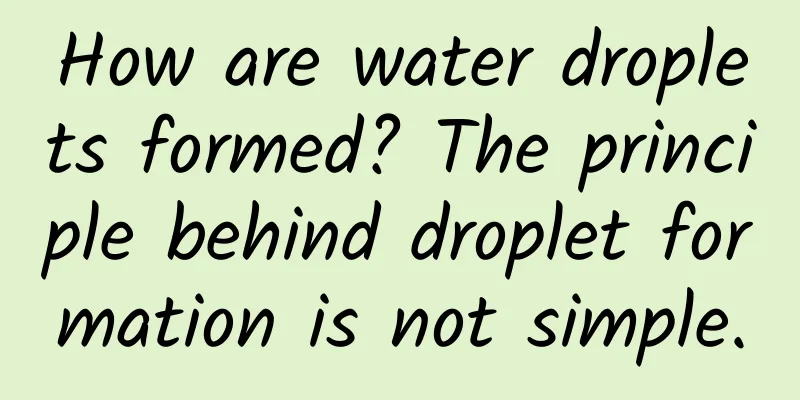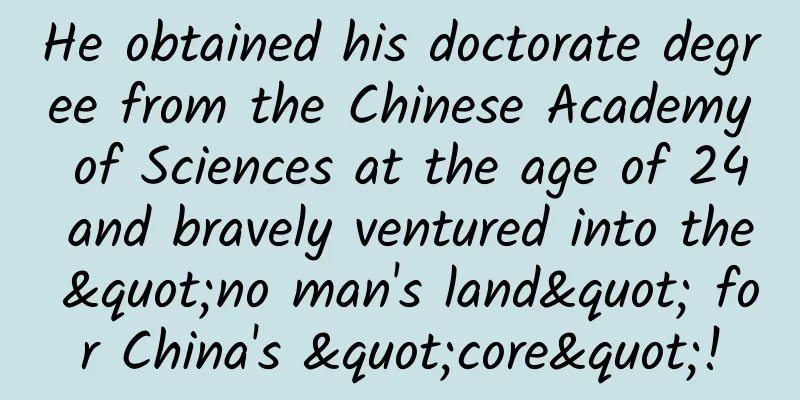How are water droplets formed? The principle behind droplet formation is not simple.

|
The author or source of this article or its original publication: Bokeyuan official website: www.bokeyuan.net And mobile software: Bo Ke Yuan Water droplets and bubbles are found almost everywhere, from brewing coffee, to complex industrial processes and even volcanic eruptions. New research from the Norwegian University of Science and Technology and the Norwegian National University of Normal Education has improved our understanding of how these bubbles and droplets form, which could improve the ability to model climate change. Understanding the formation of droplets in pure water in a controlled laboratory environment is challenging enough, but in the atmosphere, droplets form in the presence of many other substances. Some of them, such as nitrogen, oxygen and argon, do not interact much with water and are easy to explain. The chaos arises from surfactants, substances that like to stay on the surface of a droplet. If you've ever seen water bead on a hard surface, you've seen the surface tension of water in action. The water molecules are attracted to each other more than to molecules in the air, causing them to stick together as tightly as possible, causing the droplet to form a dome. An example of a surfactant is ethanol, which is found in beer, wine, champagne, and other alcoholic beverages. In a drop of champagne, the ethanol molecules pile up on the surface, greatly reducing its surface tension. The flaws of classical theory Ailo Aasen, a researcher at the Norwegian University of Science and Technology, focuses on nucleation in the presence of impurities, and his findings, newly published in the journal Physical Review Letters, are relevant to different industrial processes, especially atmospheric science and climate modeling. Before a water droplet can form in the atmosphere, enough random collisions must occur between water molecules to form the seeds or "nuclei" of the droplet. The tiny, nano-sized droplet is called a critical nucleus, and its formation is called nucleation. These nano-sized droplets usually form around dust particles, and surface-active impurities accumulate on the droplet surface. When a large enough droplet is formed, it grows spontaneously. A major goal of nucleation theory is to understand the nature of this critical 'droplet seed'. In a raindrop, there are two types of water molecules: those inside the droplet and those on the surface of the droplet. Droplets are round, so the water molecules on the surface have fewer neighbors than those inside the droplet. The smaller the droplet, the greater the proportion of its molecules on the surface. A droplet nucleus must reach a critical size before it can continue to grow, because it must overcome the surface tension created by the smaller number of molecules outside the droplet. The lower the surface tension, the easier it is for a droplet to form. This is where impurities can have a big impact: surfactants reduce the surface tension between the water droplet and the air. It can be seen that small concentrations of surfactant impurities can greatly increase the rate at which water droplets form. Since surfactants, such as sulfuric acid and ammonia, can be present in low concentrations during raindrop formation, this could be an important input parameter for weather forecasts and climate models. When surfactant impurities are present, classical nucleation theory breaks down badly. Considering curvature If the droplets form in the presence of alcohol, predictions for the rate at which droplets form can be off by a factor of more than 20. In fact, classical theory predicts that 10^20 fewer droplets will form than what the researchers actually measured in their experiments. To put that number into context, there are about 10^11 stars in the Milky Way — a billion times fewer than that. In addition to being wildly inaccurate, classical theory makes predictions that are physically impossible. In some cases, such as for water-ethanol, it predicts a negative number of water molecules in a droplet, which is, of course, impossible. The hypothesis behind Aasen's research is that these discrepancies stem from an assumption in the theory that the nucleus is spherical but has the same surface tension as a perfectly flat surface. Part of the problem here is that it is difficult to estimate how the surface tension behaves during nucleation, so the classical theory includes the assumption that the surface tension in a droplet is the same as it is found on a flat surface, which simplifies the calculations. The nuclei of tiny droplets formed in the atmosphere are only a few nanometers wide and are highly curved. The assumption that the surface tension in nucleation is the same as on a perfectly flat surface is the main reason why the classical theory doesn't always hold true. The study used a sophisticated model of the droplet surface, coupled with an accurate thermodynamic model of the liquid and vapor, to improve upon the classical theory. By properly including a more accurate representation of surface tension in the theory that accounted for the droplet's curvature, they were able to bring the theoretical predictions of the nucleation rate into line with what was actually observed in experiments, reducing the deviation from more than 20 orders of magnitude to less than two. The sometimes bizarre, physically impossible predictions made by classical nucleation theory also disappeared. A deeper understanding of droplet formation, and procedures for modeling it, could have benefits far beyond climate science: This theory and framework has the potential to improve the description and understanding of so many phenomena in the years ahead. Bo Ke Yuan | Research/From: Norwegian University of Science and Technology Reference journal: Physical Review Letters BoKeYuan|Science, technology, research, popular science Follow [Bokeyuan] to see more beautiful cosmic science |
<<: The research has confirmed: If you are sleepy but don’t sleep, your DNA will be damaged!
>>: Helicobacter worms found in bananas that kill within 72 hours? Is this a fungus or a worm?
Recommend
Joint statement by Sanmao's family and the copyright holder (with original text)
Joint statement by Sanmao's family and copyri...
Chinese scientists discover alkali-resistant gene! Increased grain production is just around the corner
In the early morning of March 24, 2023, the resea...
How much does it cost to customize a small business program in Qiandongnan?
In order to better penetrate into various industr...
Drinking alcohol and getting red on the face! Is the "Asian flush" an evolutionary "defect"?
Leviathan Press: Do you get flushed when you drin...
It’s not easy for WebView to say I love you
[[189802]] Why use WebView? With the continuous d...
An article to understand the communication between Android and Flutter
As a cross-platform solution, Flutter is often em...
Feng Shui layout method for Wenchang position in 2020
The Wenchang position can be used as a bedroom or...
Mobei Class SEO Course 9th VIP Course 10th Optimization SEO Course 2020 Synchronous 10th
The 9th session of SEO training has started, and ...
Why are mobile phones getting heavier nowadays?
Mobile phones are not only our communication tool...
Top 6 latest Christmas advertisements in 2020, the creativity is amazing!
As a traditional Western festival, Christmas has ...
Android performance optimization memory leak
Overview A memory leak is when a program fails to...
360 search advertising promotion statistics report data!
How long can I view data? You can query data with...
Experience the first version of Android 9.0: Like these 6 changes
A few days ago, Google quietly released the lates...
Top Ten World-West Traffic Tunnels in China
1 The world's longest twin-hole highway tunne...
Is it reliable to use AI to fill in college entrance examination applications?
After the college entrance examination, students ...









